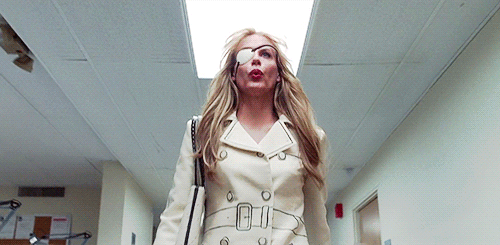Jose here. The five gentlemen nominated for the Best Cinematography Oscar have amassed a more than respectable amount of accolades, they boast a collected 37 Oscar nominations between the 5 of them, with Edward Lachman being the least nominated having only two (both for his previous collaborations with Todd Haynes) and Roger Deakins being the perpetual bridesmaid with 13 career nominations and no wins (not that he needs them anyway, he has 3 BAFTAS and 3 ASC Awards to console him).
Even if these folks get nominated for awards all the time, some of their work has been received coolly by awards bodies. Unbelievable, I know. So, here are 5 “undersung” achievements by this year’s nominees...
Edward Lachman - Erin Brockovich
(Interviewed here for Carol)
Many people forget that cinematography goes beyond pretty framing, filters and breathtaking light, it also has a lot to do with how/where the camera moves. As “found footage” and home recordings become more prevalent in modern filmmaking, it’s impossible not to think about that intimate scene in Steven Soderbergh’s Erin Brockovich in which the heroine (Julia Roberts) gives the “Miss Wichita” monologue, as her boyfriend (Aaron Eckhart) lies in bed. Lachman’s camera never stops moving, it shakes as if embarrassed by how intrusive it’s being, but it also falls under the heroine’s charm. She might not be dressed like a queen, but in the eye of the camera few people have ever looked more regal.

Robert Richardson - Kill Bill Vol. 1
As divisive as Quentin Tarantino’s work tends to be, his collaborations with Robert Richardson have all won unanimous praise. Even people who don’t like The Hateful Eight agree that the film contains some astonishing work of light and shadow. But when Richardson and QT went all out in their kung fu extravaganza, no one offered them trophies for the ingenious way the O-Ren Ishii (Lucy Liu) battle is beautifully and brutally lensed, or the camera’s gleeful fear as it follows Daryl Hannah’s wicked Elle Driver down a hallway. 
John Seale - Gorillas in the Mist
While most of his work has been characterized for its use of yellows, goldens and oranges (everything Mad Max:Fury Road is), this 1988 film seems to be the exception because of its lush greens and blues. I distinctly remember as a child being terrified of this film (I was two when it came out, don’t judge) because of how the camera penetrated the jungles of Rwanda never knowing what would turn up around the corner. Few times have the films captured the mystery of nature with such awe.

Emmanuel Lubezki - Great Expectations
(Interviewed here for The Revenant)
Chivo certainly isn’t wanting for accolades. He might very well win his third Oscar in a row for The Revenant, but it’s a shame that his less “showy” films don’t get the same kind of attention that his gimmicky efforts do. Think about the voyeuristic richness of his work in Y Tu Mama Tambien for instance, or the intense greens and romantic light of his work in Alfonso Cuarón’s adaptation of Charles Dickens’ novel (this is incidentally the only Cuarón film not to be nominated for a single major award of any kind). While Chivo gets much praise for his ability to take the camera to insane places, or to do mesmerizing tracking shots, very rarely has be been commended for how great he is at lighting movie stars. Has Gwyneth Paltrow ever looked more radiant than she does in this film? The scene where she steals Ethan Hawkes’ water in the park is so sensuous and beautiful, one might expect Garbo to appear onscreen rather than Paltrow.

Roger Deakins - Revolutionary Road
(Interviewed here for True Grit)
Yes, Deakins was nominated for an Oscar in 2008, for his work in The Reader (along with co-cinematographer Chris Menges), but in the rare time when people didn’t go fully gaga about both his achievements during the same year, his lush, expressionistic work in Sam Mendes’ film was snubbed by pretty much every major organization (except for the ASC). To say it was because he had done two period films with Kate Winslet would be to reduce his work to extremely simplistic terms. His work in The Reader is sensual, in Road, it’s pragmatic and almost satirical in its compositions. His framing shows how the Wheelers’ dreams are oppressed, and by the time he opens up the spaces the camera is capturing, the lead characters have become so damaged that the frame feels like a cage.
Which of their works do you wish had received more praise?
Who are you hoping wins this year? (Cinematography Oscar Chart)
